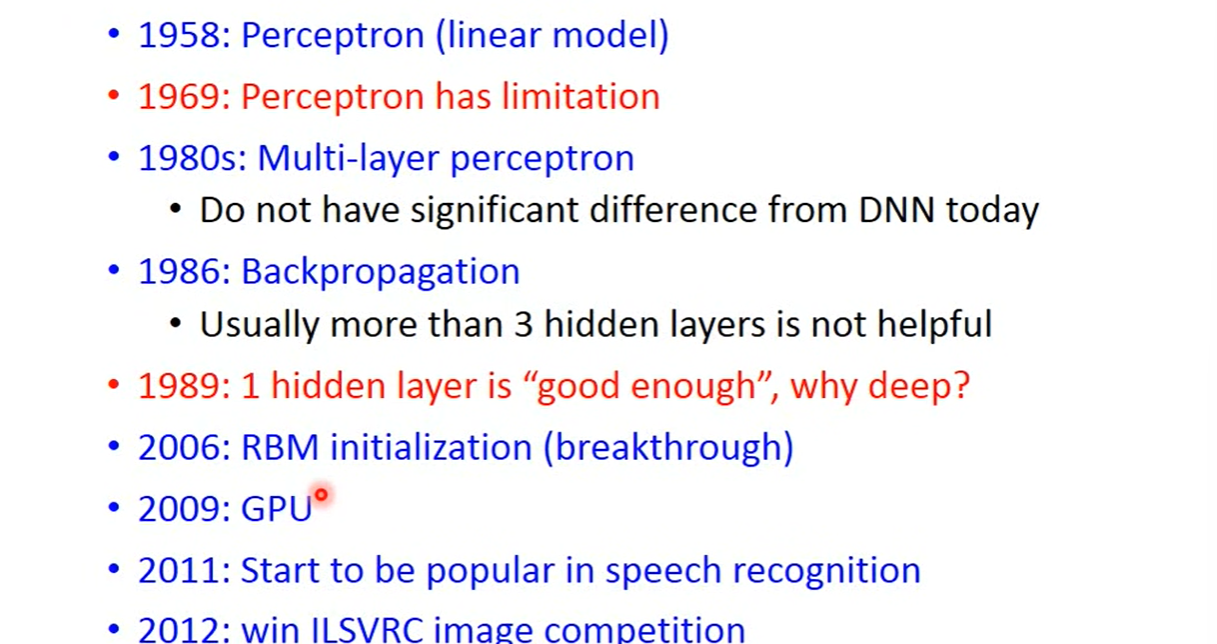Key Term:
Machine Learning ≈ Looking for function
Different Types of Functions
- Regression
- Classification
- Structured Learning
How to find a function
- Step1. Function with unknow parameters
Model, weight, bias, feature - Step2. Define Loss from training Data
MAE, MSE, Cross-entropy, Error Surface - Step3. Optimization
Gradient Descent, Backpropagation Batch, Epoch
- Step1. Function with unknow parameters
Model
Activate Funtion- Linear Model
- Sigmoid Function
- ReLu
1 Machine Learning ≈ Looking for function
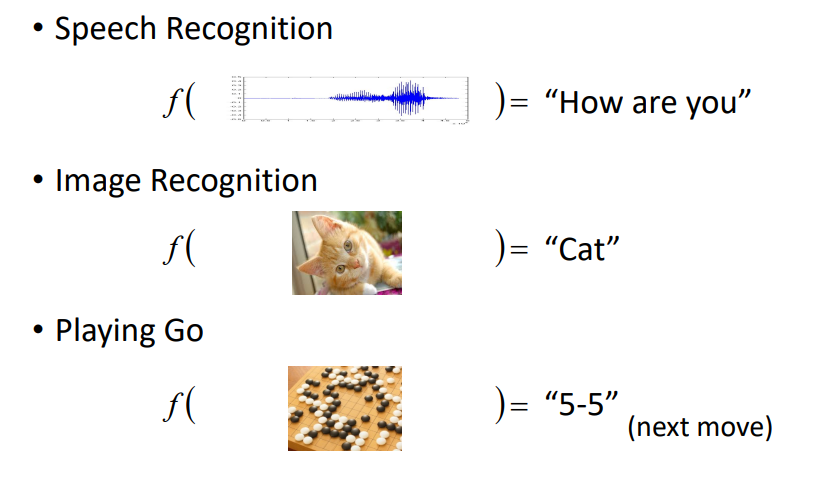
2 Different Types of Functions
- Regression: The function outputs a scalar
- Classification: Given options (classes), the function outputs the correct one.
- Structured Learning: create something with structure (image, document)
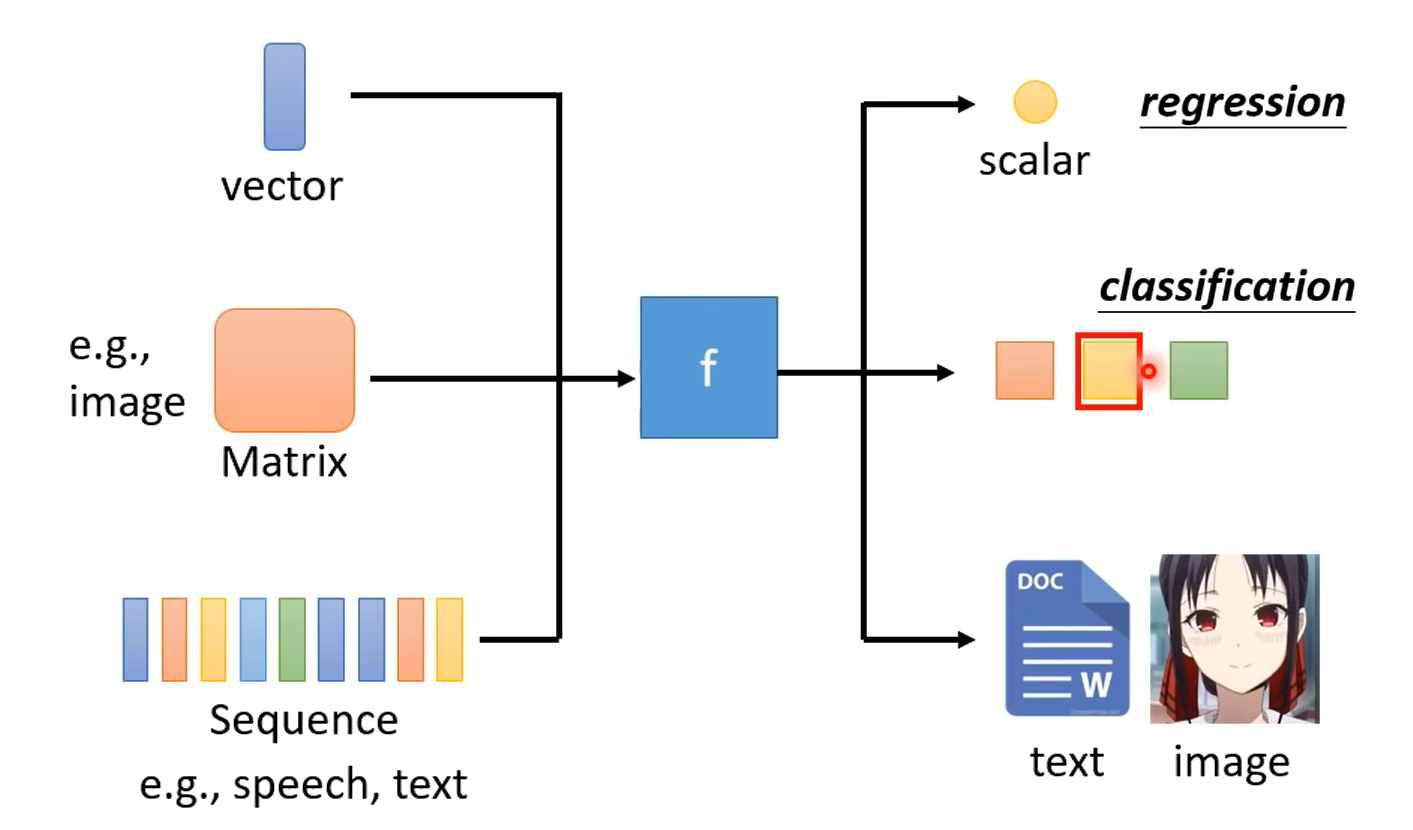
3 How to find a function

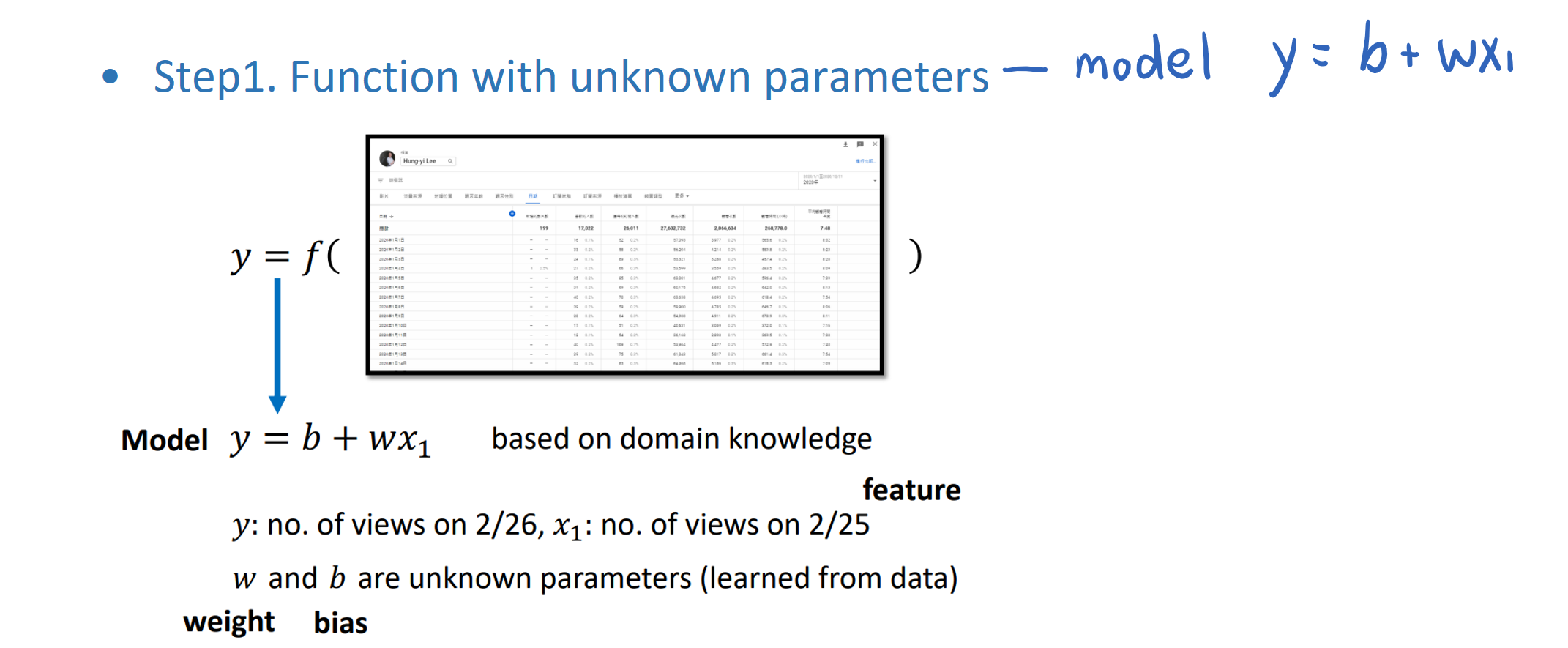
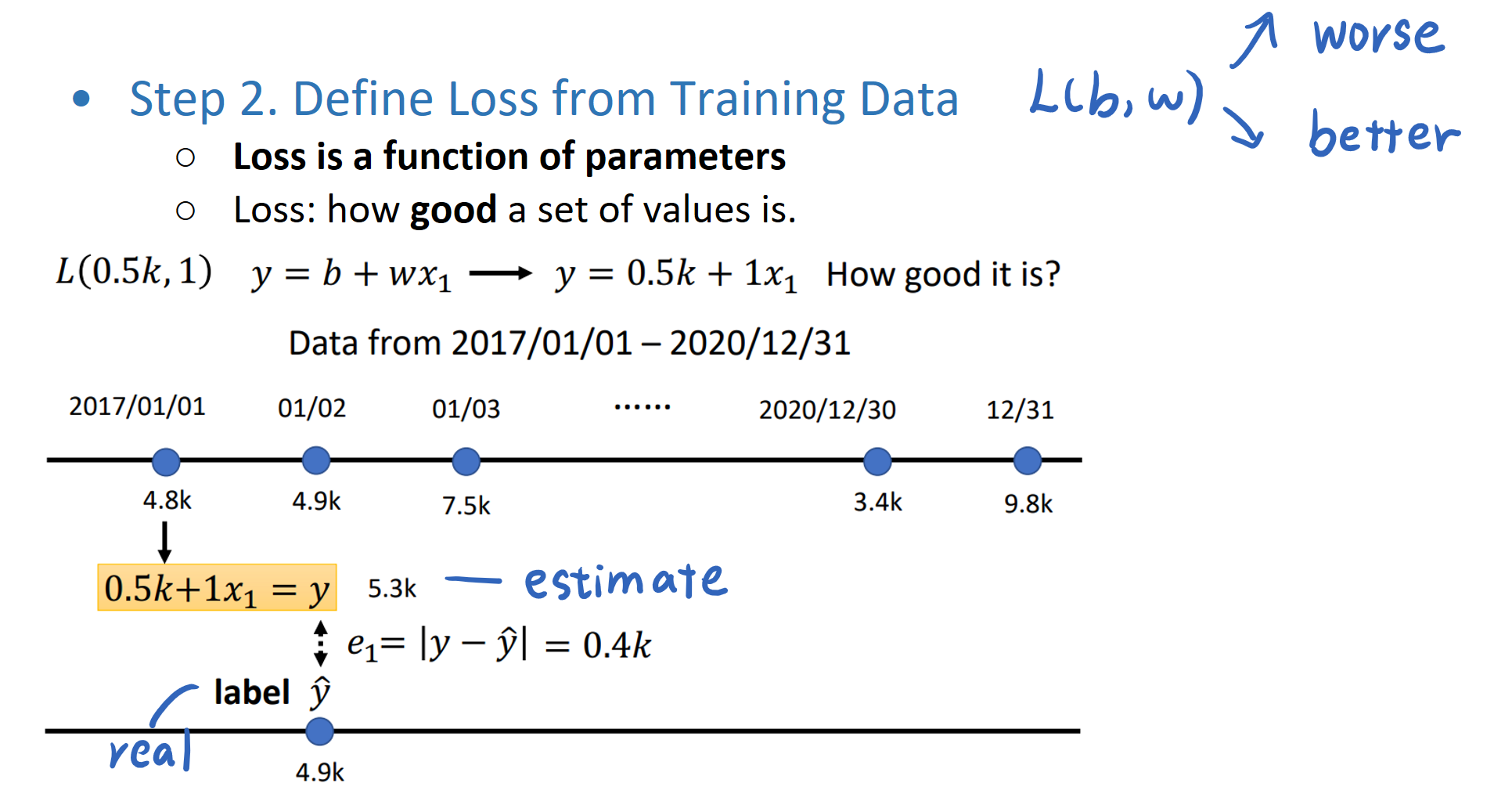
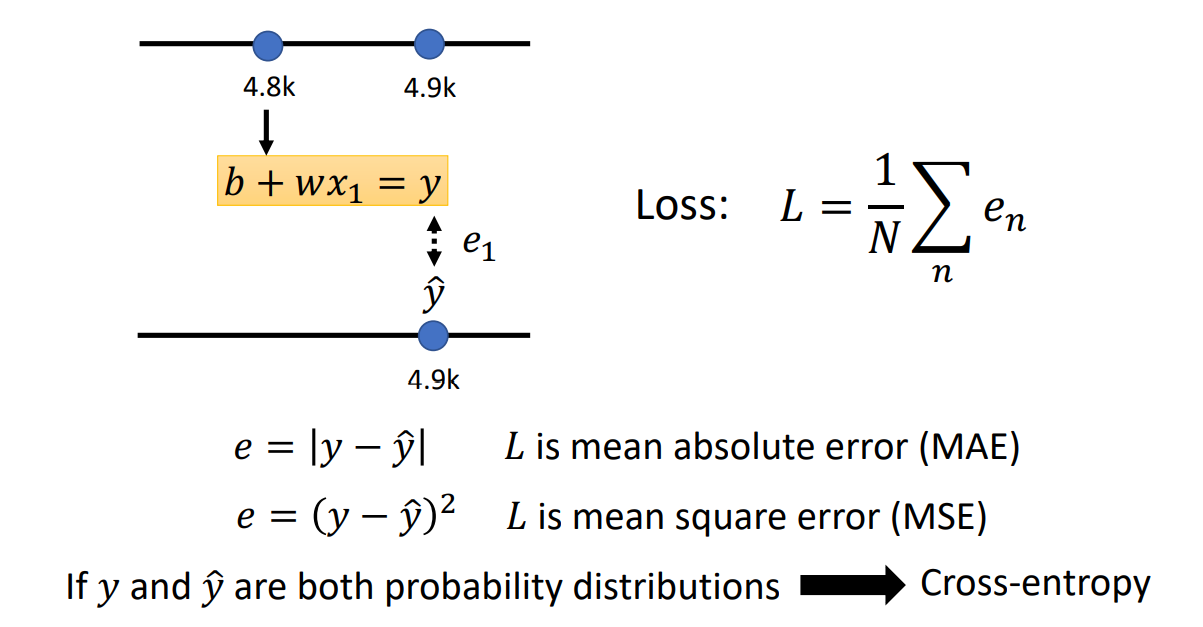
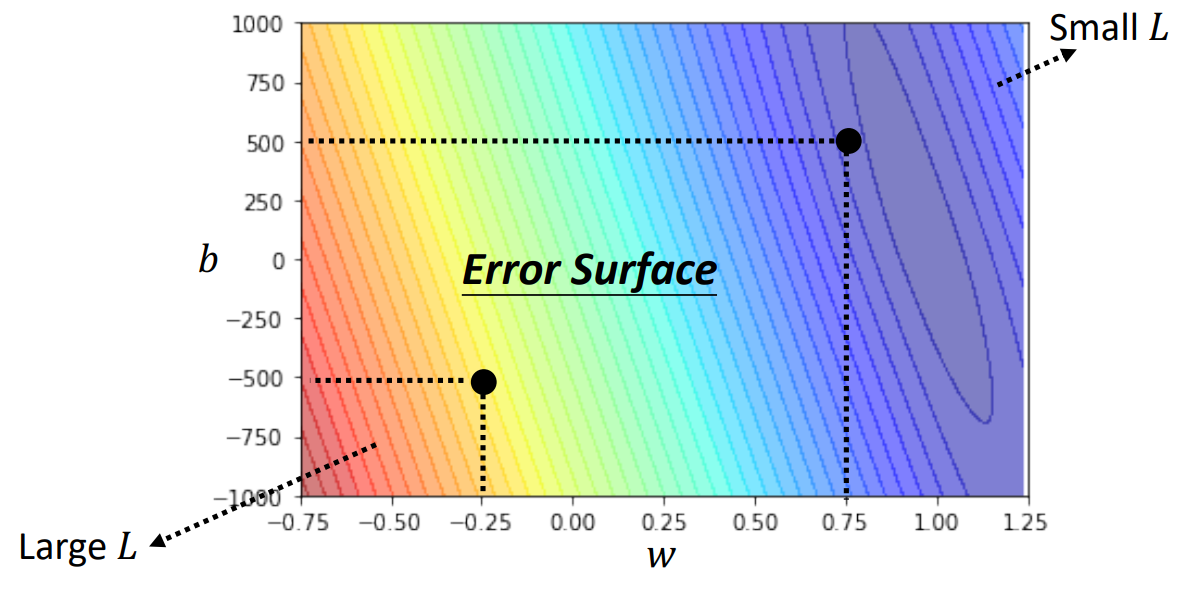
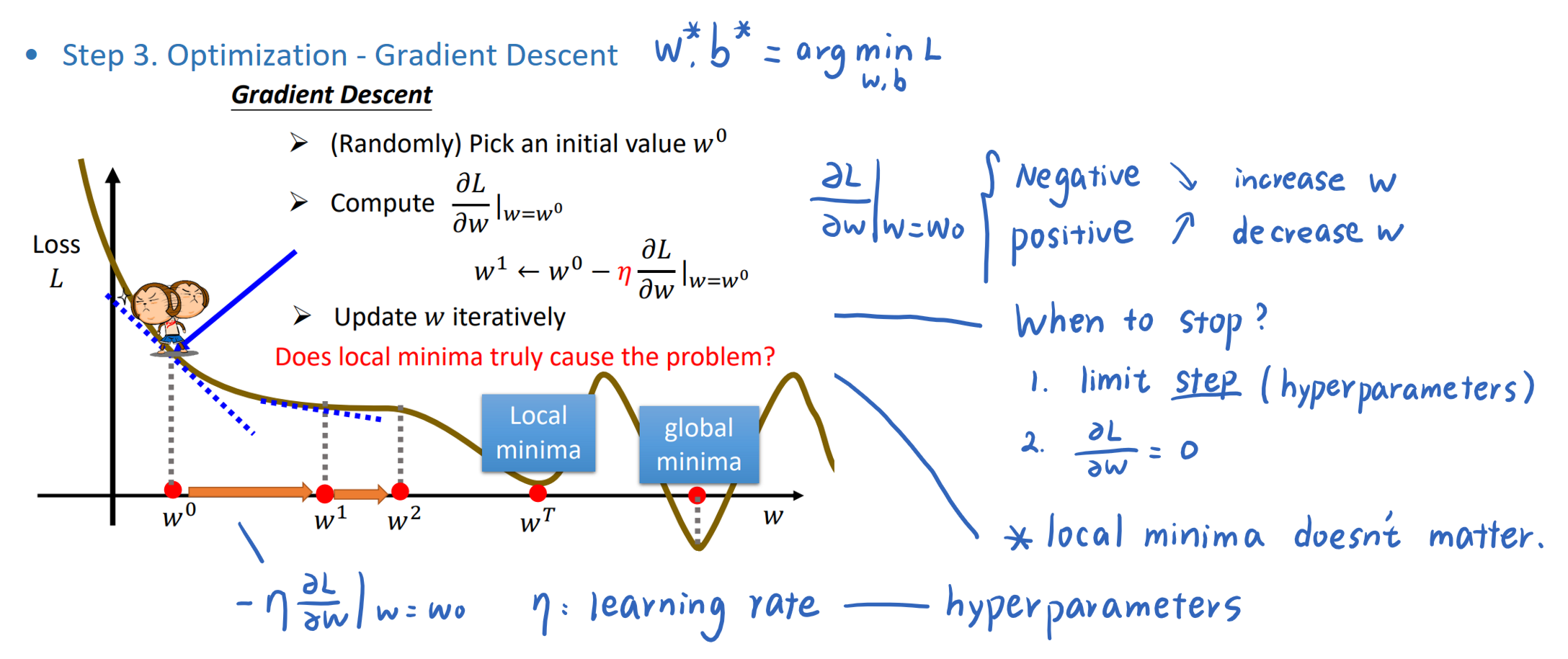
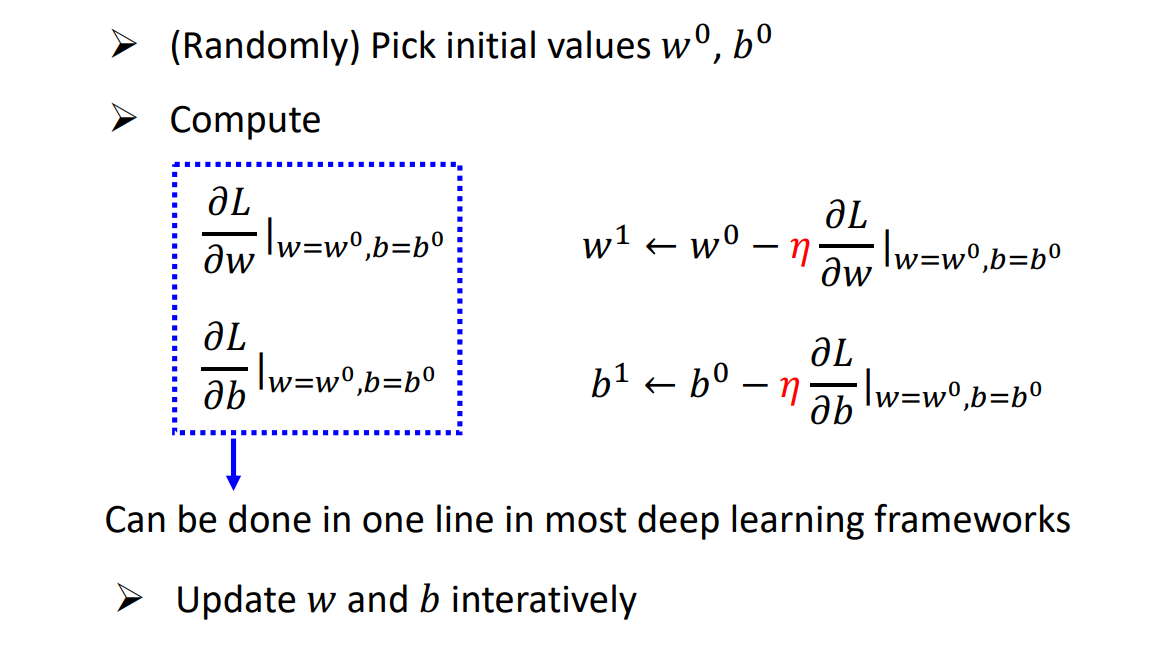
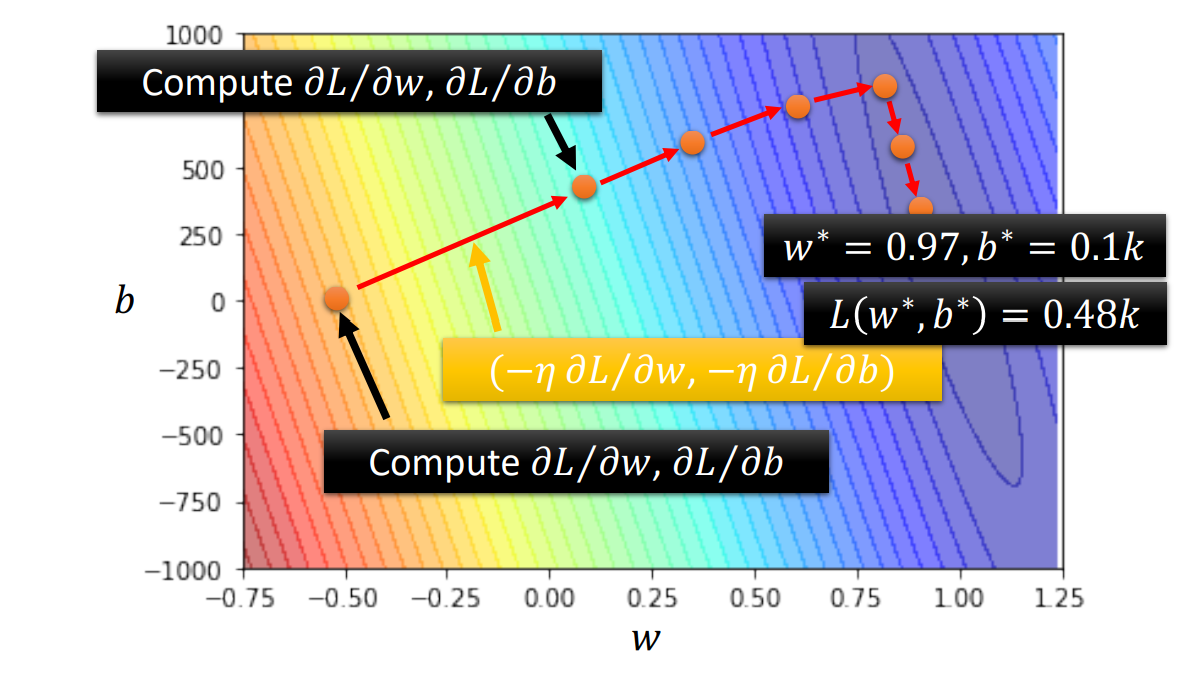
4 ML Framework

Step1. Model
How to choose: Depend on domain knowledge
Linear Models
Have model Bias (model limitation),
Sigmoid Function
Hard Sigmoid

Soft Sigmoid

Change parameter
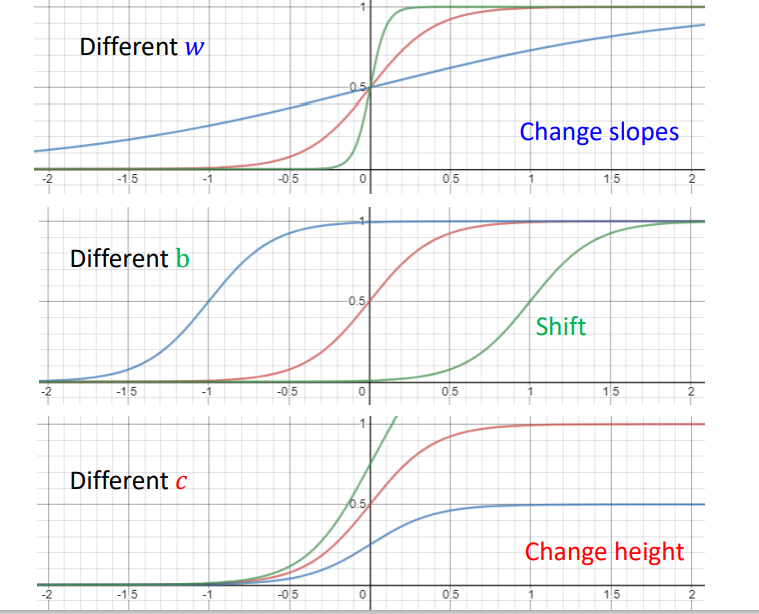
New Model: More Features
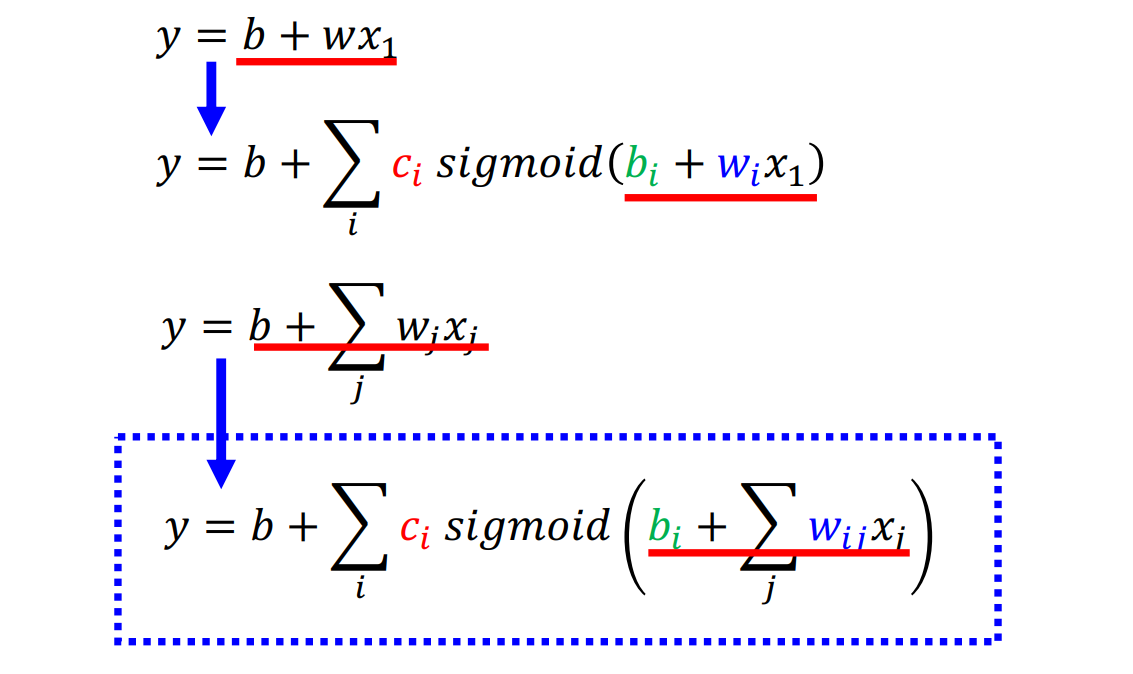
Hyperparameter:
- : no. of features
- : no. of sigmoid
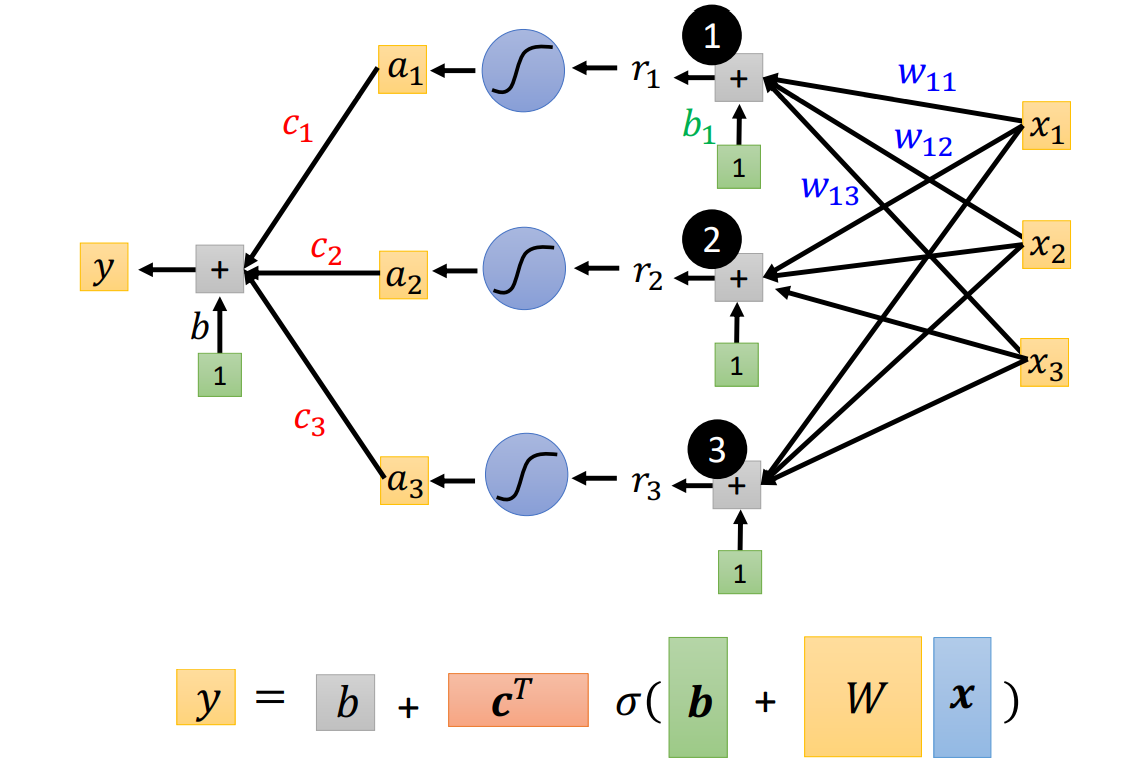

Can be seen as Matrix Operation (Why call GPU when Training)
ReLu
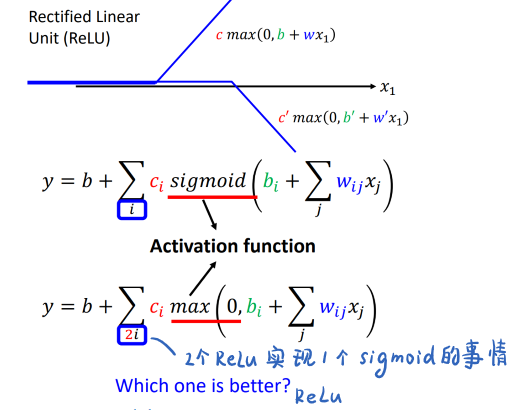
Deeper Model
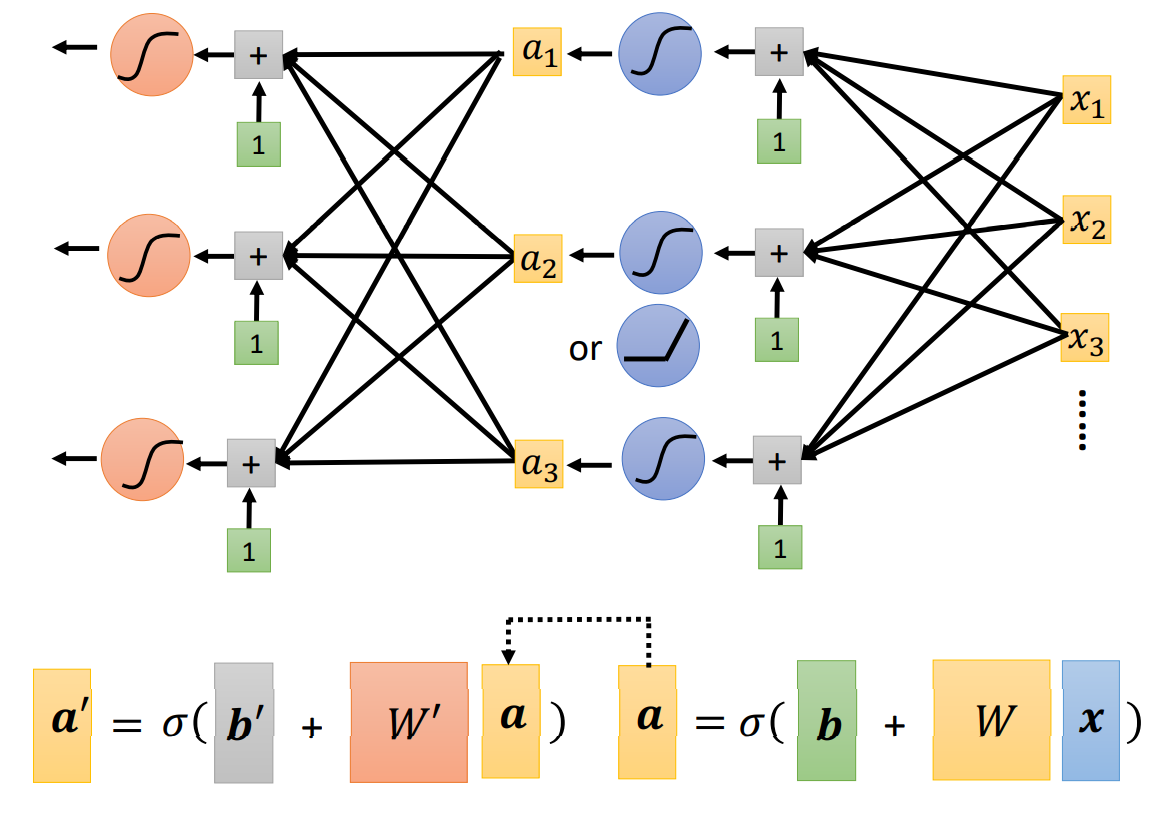
Fully Connect Feedforward Network
This is a function. Input vector, output vector.
Given network structure, define a function set.
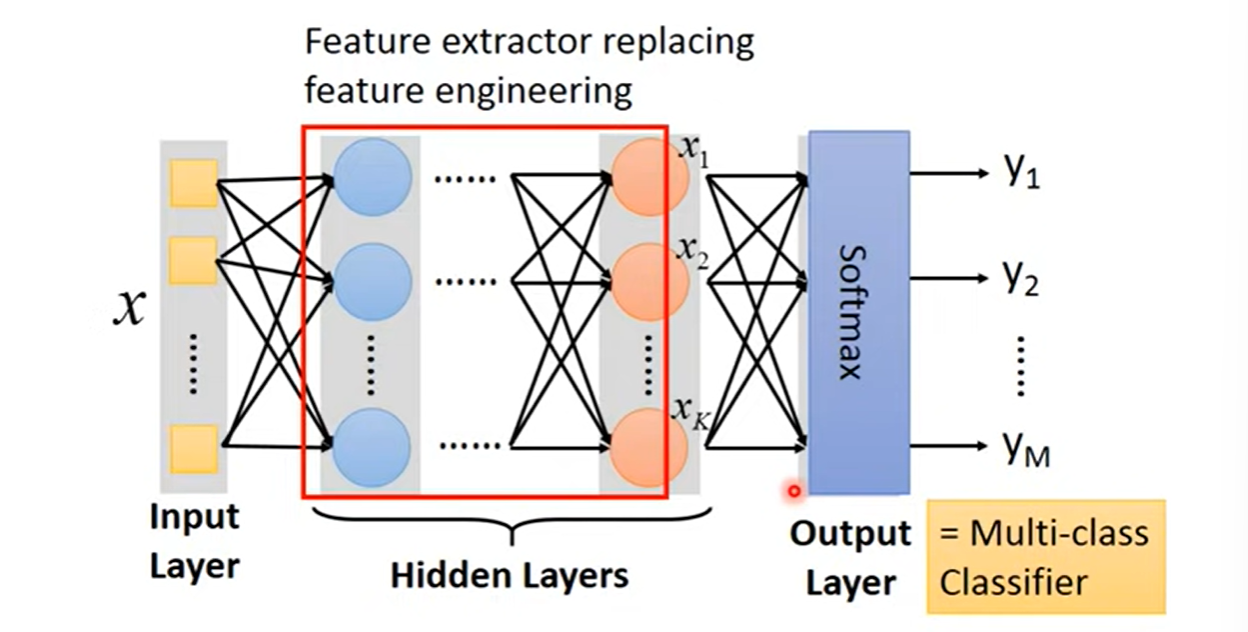
The costum model is to do feacture engineering, which is to do feature transform to find good features.
The deep learning does not need to find good features. It means it just use pixels. But it needs to design the structure of neural network.Can the structure be automatically determined?
E.g. Evolutionary Artificial Neural Networks
Step2. Loss
- Loss is a function of parameters
- Loss means how good a set of values is.

Regularization
If some noises corrupt input when testing, a smoother function has less influence.

It has the better performance when we don’t consider bias on the
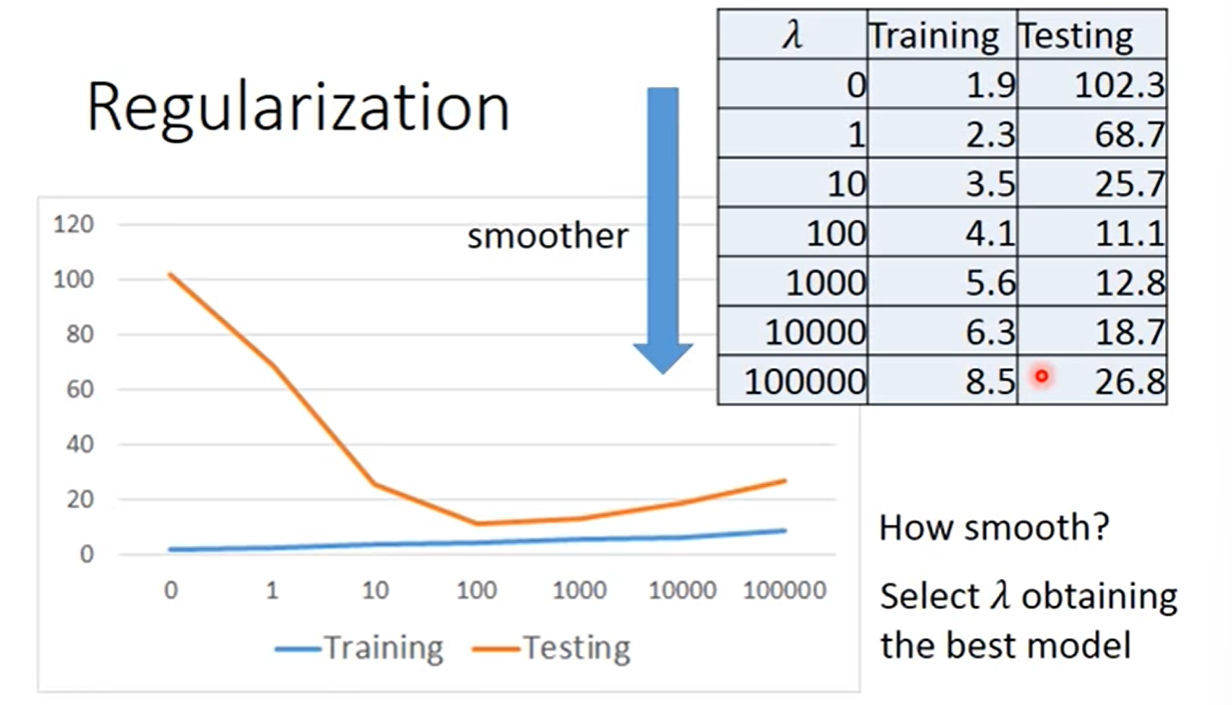
- Training erroe: larger , considering the training error less.
- We prefer smooth function, but don’t be too smooth.
Step 3. Optimization
Optimization of New Model
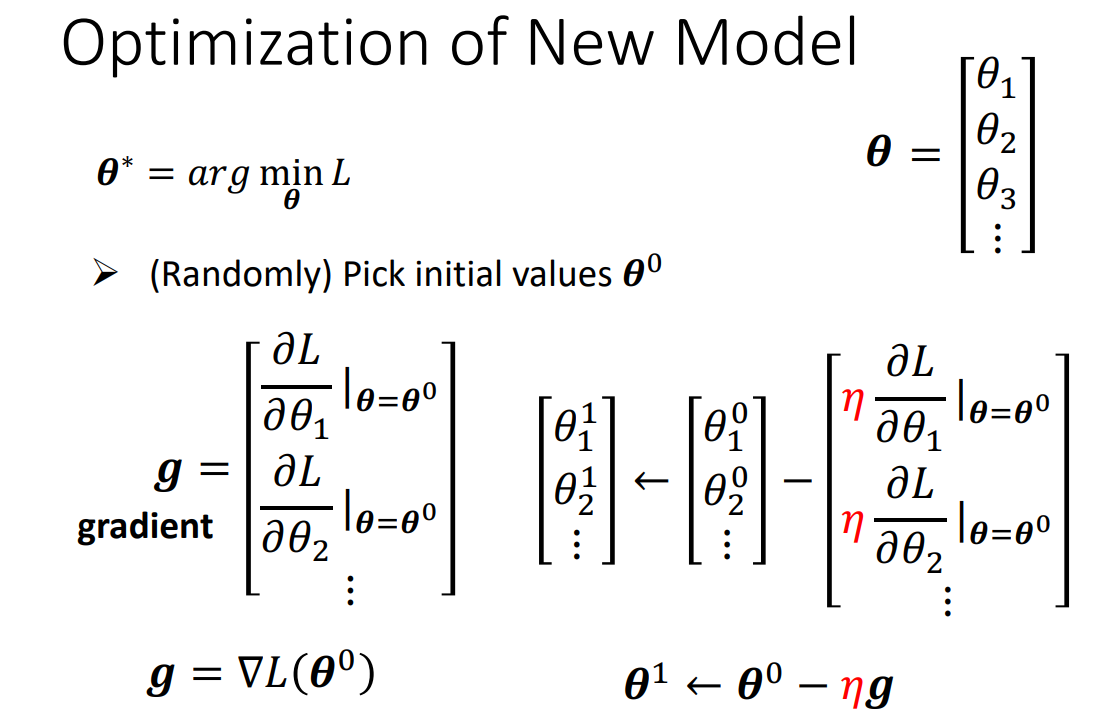
Backpropogation

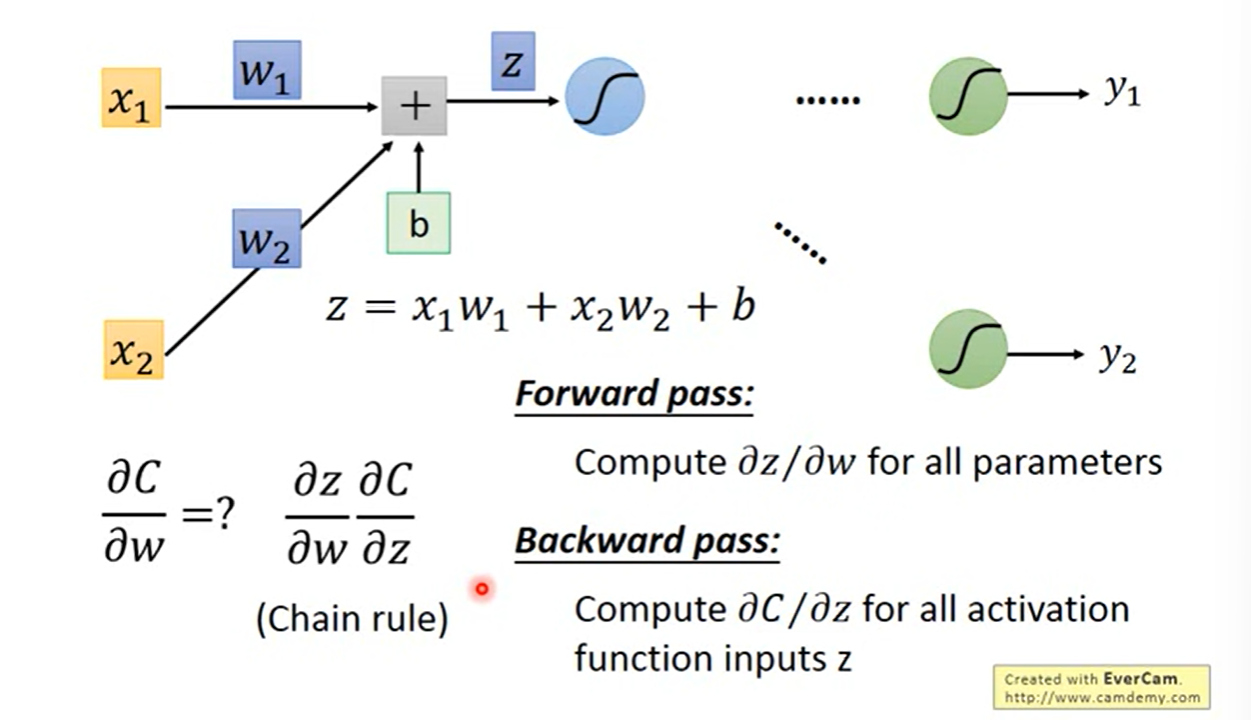
Backpropagation - Backward Pass


Compute recursively, until we reach the output layer.
Chain Rule
Batch & Epoch
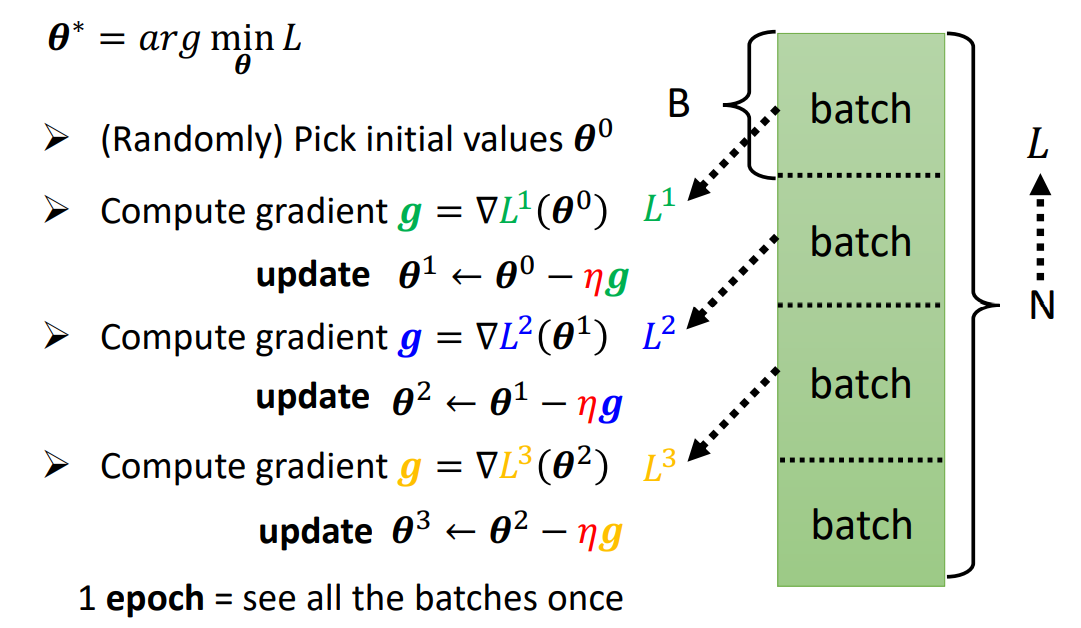
- Suppose we have 1k data, the batch size is 100,
- so the number of update in 1 epoch will be 10.
Backpropagation
An efficient way to compute in neural network.
5 Deep Learning
- Many layers means Deep -> Deep Learning
Why don’t we go deeper?
Overfitting: Better on training data, worse on unseen data.

figure: Loss for mutiple hidden layers
5.1 History of Deep Learning
